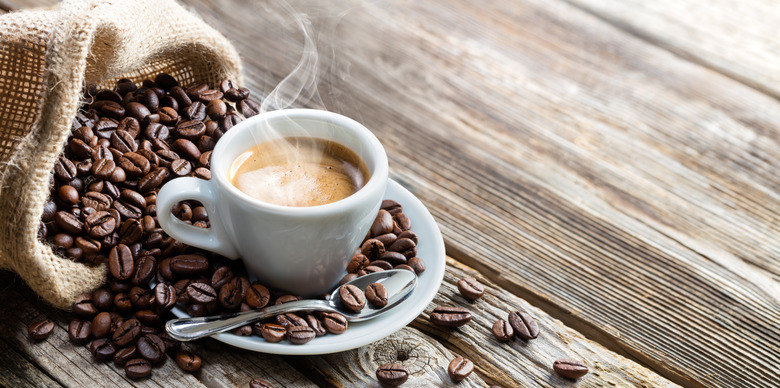How To Extract Pure Caffeine From Coffee
Caffeine, an alkaloid compound that occurs naturally in tea leaves and coffee beans, has many physiological effects on the body. When you drink coffee, tea, soda or energy drinks you might feel more alert because caffeine is a stimulant. However, you can remove caffeine from coffee via a process called extraction to produce decaffeinated versions of beverages.
TL;DR (Too Long; Didn't Read)
Different methods can extract pure caffeine from coffee, including direct organic solvent extraction, the water process method and supercritical carbon dioxide extraction.
Direct Organic Solvent Extraction
Direct Organic Solvent Extraction
A common method of extracting caffeine from coffee beans is organic solvent extraction, using an organic solvent to wash the beans. First, you moisten or steam the beans in a rotating drum for at least 30 minutes to open their pores, then rinse them repeatedly for several hours with dichloromethane (methylene chloride) or ethyl acetate. These solvents were both authorized by the United States Food and Drug Administration for coffee decaffeination.
The caffeine saturates the solvent, so you can remove it. At this point the caffeine extracted from the beans is now dissolved in the solvent, rather than the beans. After rinsing, you steam the beans for a second time, which evaporates the solvent, leaving the caffeine behind as white powder. The beans are then vacuum dried. This method can also extract caffeine from liquid coffee. Coffee is mostly water, so dichloromethane works because it is a water-immiscible solvent. When dichloromethane and water mix together, they separate into two layers.
Water Process Method
Water Process Method
During the water process method, you place the coffee beans in water and heat to around boiling point. This removes the caffeine from the beans, but it also removes all flavor. You treat the mixture with solvent, which absorbs and evaporates the caffeine. Finally, you put the beans in the mixture again to let them absorb the flavor they lost earlier in the process.
Supercritical Carbon Dioxide Extraction
Supercritical Carbon Dioxide Extraction
Another way to extract pure caffeine from coffee beans uses carbon dioxide. Carbon dioxide is a gas at atmospheric pressure and temperature, but if you raise the pressure and temperature, the gas changes into a supercritical liquid (like a cross between a liquid and a gas). In carbon dioxide extraction, your rinse the beans with supercritical liquid carbon dioxide. Then, you filter the supercritical liquid to get rid of the extracted caffeine, and recycle it to use it again.
Cite This Article
MLA
Gillespie, Claire. "How To Extract Pure Caffeine From Coffee" sciencing.com, https://www.sciencing.com/extract-pure-caffeine-coffee-7660535/. 20 April 2018.
APA
Gillespie, Claire. (2018, April 20). How To Extract Pure Caffeine From Coffee. sciencing.com. Retrieved from https://www.sciencing.com/extract-pure-caffeine-coffee-7660535/
Chicago
Gillespie, Claire. How To Extract Pure Caffeine From Coffee last modified March 24, 2022. https://www.sciencing.com/extract-pure-caffeine-coffee-7660535/
